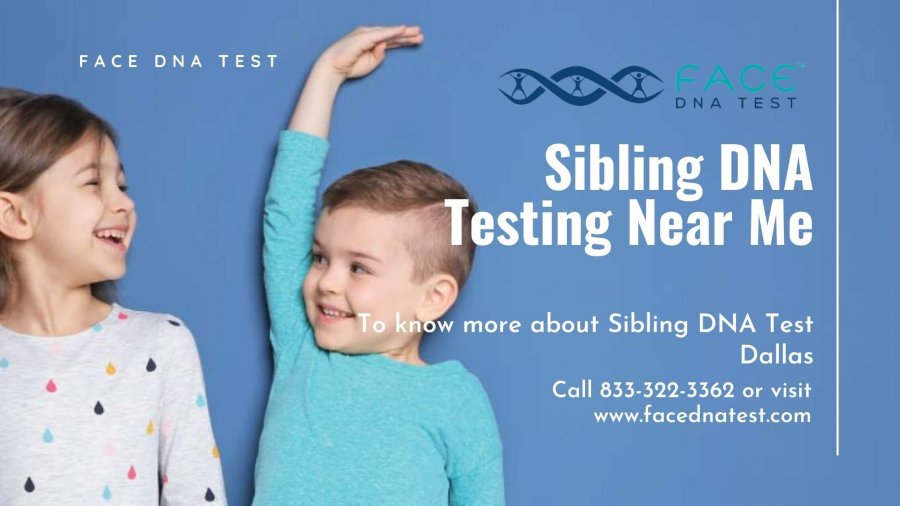A Sibling DNA Test is used to determine the probability that two persons are related as siblings. As we know, direct paternity and maternity DNA tests are always considered the best option to determine biological relationships. But, in instances where the alleged parents are unavailable, sibling DNA testing provides another option. Full siblings, half-siblings, or not siblings at all; you should prefer DNA testing to discover the possibilities. It is better to choose an accredited DNA testing service such as Sibling DNA Test Dallas which can also help you in legal cases.
Types of Sibling DNA Tests
There are three possible sibling DNA testing types based on the relationship of the parent or parents to the two people being tested.
Remember that, when both biological parents are shared, then two individuals will be full siblings with approximately 50% of the same genes. When only one biological parent is shared, they will be half-siblings, sharing approx. 25% of the same genes.
Full siblings versus unrelated
Here, DNA is compared to find the probability of the two tested individuals having the same biological mother and father, versus having no biological relationship.
Full siblings versus half-siblings
DNA is compared to find the probability of two tested persons who are known to have the same biological mother, to determine the probability that they also have the same biological father.
In case, when the mother is available, DNA testing samples from the mother will considerably increase the accuracy of the DNA results.
Half siblings versus unrelated
In this sibling DNA testing, two people with different biological mothers determine the probability that they have the same biological father.
Furthermore, if available, DNA testing samples from at least one and preferably both mothers will increase the accuracy of the result. Go for DNA Match Siblings Fort Worth TX at “facednatest.com”.
Do siblings DNA test show they have same ancestry?
Siblings may have different ethnicities and particular percentages even when they have similar ancestry through their parents. Differentiations result from each kid inheriting a unique mix of chromosomes from their parents’ ancestry. Based on distinct family genetics, sibling DNA testing can identify differences in regional original roots.
Sibling Racial DNA Test difference
It is indeed conceivable for complete siblings to have DNA configurations that differ significantly in race. Parents reproduce by randomly mixing and recombining their DNA, which is then passed on to the progeny. Genetic variances result from the distinct set of chromosomes that each child inherits. Siblings may inherit different combinations of paternal DNA even if they share the same parents.
It is highly unlikely. Based on their upbringing, interaction with other cultures, genetic makeup, and individual preference, siblings may identify with completely distinct ethnic groupings. DNA testing can reveal genetic differences in ancestral backgrounds and estimated ethnicity among siblings. Ethnicity is also significantly influenced by one’s self-identity.
Siblings having the exact same parents might therefore have genealogical beginnings that are identical but not the same. Face DNA Testing’s sophisticated sibling DNA testing employ a variety of reference groups to get precise estimations of ancestry. However, differences might still exist within siblings.
How can siblings have different DNA test results?
Recombination occurs during development when chromosomes exchange DNA segments resulting from the parents’ genomes. Siblings have different biological blueprints as a result of this DNA shuffle. Furthermore, every child acquires their distinctive DNA due to DNA crossing over during the formation of the reproductive cells.
Due to the haphazard arrangement of chromosomes that each kid inherits, siblings acquire distinct mixes of their parents’ DNA. Recombination of genomes and crossover among siblings throughout the process of meiosis provides genetic variation that distinguishes the DNA compositions of different ancestries.
DNA Rearrangement
The familial mismatch results from little differences in the DNA of the sperm and eggs, not from secrets in the closet.
The process via which the body produces sperm or eggs is called genetic recombination. By doing this, normal cells lose half of their chromosome count from 46 to 23 so the sperm and egg join to produce a complete genetic bundle during conception.
Can siblings have the same ancestry DNA Test results?
When it comes to biological siblings who have the same mother and father, even for them, the likelihood of having identical heritage DNA test results is relatively low. Spontaneous genetic shuffles result in a unique mix of parental DNA that each child receives. Sibling differences in ancestral origin result from these distinct DNA successions.
Siblings with distinct ancestries: Based on their regional ancestry ratios and estimated ethnicities, full siblings taking the Ancestry DNA test will likely have varying outcomes. A child’s DNA is rearranged differently in every reproduction cycle before inheritance, which causes variations.
Choose Clarity with Our DNA Test.
Get Accurate Answers With our Test!.
-
- Accurate
- Quick Result
- Private and Secure
- Affordable

Conclusion
Discrepancies observed between siblings can be explained by the random nature of DNA inheritance. The transmission of genes is unique even when sibling DNA is identical due to unique recombination during reproduction. Such ancestral differences are detectable by inexpensive sibling DNA testing. Thus, by reviewing our in-depth DNA research, you can comprehend the genetically identified relationships that demonstrate a typical mother or father. For assistance in comprehending the outcomes of your reasonably priced sibling DNA test and figuring out what the findings legally imply, contact Face DNA Testing. Contact us regarding sibling DNA testing near me and solutions to familial history inquiries.







Leave a Reply
Your email is safe with us.
You must be logged in to post a comment.